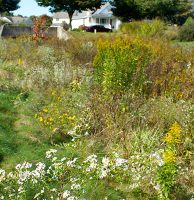
Managing Stormwater Runoff at the Municipal Level
If left unchecked, stormwater can add pollutants like soil, nutrients (nitrogen and phosphorus), and pathogens into our streams and rivers. This may lead to health impacts, unsightly and unpleasantly smelling waterways, and a degraded environment. That is why there are laws in place for proper management of stormwater runoff. In this article, we will give a brief overview of those laws, with a special focus on municipal ordinances and the important role they play in stormwater management.
Background Legislation
The Pennsylvania Storm Water Management Act of 1978, also known as Act 167, provides the legal basis for stormwater management in the Commonwealth. The Act requires that counties within designated watersheds develop stormwater management plans, and that each affected municipality adopt specific stormwater ordinances to implement their Act 167 plan.
There are 376 stormwater management watersheds designated across Pennsylvania, and 2,566 municipalities contained within. This set-up allows for various municipalities and counties to work together and individually to address their stormwater management concerns. Some of these municipalities are required to obtain a Municipal Separate Storm Sewer System (MS4) permit, which comes with its own set of requirements. But for the others, the development of a stormwater ordinance is the best line of defense in minimizing the negative effects of stormwater runoff.
Stormwater Ordinances
An ordinance is a piece of legislation put in place by a municipality to set rules for a specific activity. For instance, most municipalities in the state have a zoning ordinance that outlines what activities can take place in each zoning district, such as residential homes, industrial warehouses, and commercial shopping centers. The ordinance may include height restrictions, required number of parking spaces, and the penalties for violating the content of the ordinance.
Act 167 requires municipalities to “adopt or amend, and shall implement such ordinances and regulations, including zoning, subdivision and development, building code, and erosion and sedimentation ordinances, as are necessary to regulate development within the municipality in a manner consistent with the applicable watershed storm water plan and the provisions of this act.”
A municipality may or may not refer to their ordinance specifically as a “stormwater management ordinance,” yet the purpose is to do just that. The content may vary from one municipality to another, but the overall goal is to minimize the pollutants entering stormwater and to reduce the amount of polluted stormwater entering a municipality’s waterways. It may do this by restricting what types of chemicals can be used near streams, designating stormwater best management practices (BMPs) that must be used on construction sites or in new housing developments, and setting fines and other penalties for those who pollute stormwater runoff.
Resources for Creating an Ordinance
The PA Department of Environmental Protection (DEP) was directed under Act 167 to create a model stormwater ordinance. This is a good place to start in developing your own, but remember that each municipality has its own unique conditions that will need to be considered. It is highly recommended that you consult your solicitor to ensure that the document’s contents are applicable with other municipal code. Other sample ordinances can be found with a quick Google search.


